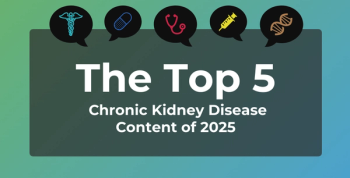
Cellular Proliferation Drives HIV Persistence During Treatment With ART
According to a new study, cellular proliferation generates the majority of infected cells during antiretroviral therapy (ART), suggesting that reducing proliferation can decrease the size of the HIV reservoir and work toward a cure.
Reducing the HIV reservoir—a group of cells that are infected with HIV but are not actively producing new HIV—has proven to be one of the biggest challenges for researchers searching for a cure for the virus. Although adherence to antiretroviral therapy (ART) lowers the rate of HIV proliferation and can result in viral suppression, some infected cells still proliferate and can persist for decades despite treatment.
According to a new study, cellular proliferation generates the majority of infected cells during ART, suggesting that reducing proliferation can decrease the size of the HIV reservoir and work toward a cure. The study provides an answer to the longstanding question facing HIV researchers: Does HIV survive through replication from infected cells that evade treatment or through proliferation from cells that have HIV genes from earlier infection?
“There is debate whether infection remains due to HIV replication within a small population of cells or persistence of memory CD4+ cells with HIV integrated into human chromosomal DNA,” wrote the researchers. “If the latter mechanism predominates, prolonged cellular lifespan and/or cellular proliferation may sustain stable numbers of infected cells.”
When the HIV virus infects a cell, it inserts its DNA into the human chromosome, creating a unique genetic signature. Thus, the researchers assumed that cells arising from viral replication would have unique sequences, whereas those generated from cellular proliferation would have equivalent sequences and thus be part of clonal populations. Using ecologic tools, the researchers studied the abundance of clonal HIV by applying methods to integration site and replication-competent HIV sequence data.
They also designed a mathematical model to reconcile HIV evolution following initiation of ART with clonality after a year of ART. The model included all 3 hypotheses for HIV persistence: a drug sanctuary, long-lived infected cells, and proliferating infected cells. Assuming that prior to ART all infected cells were generated by viral replication, the researchers tracked the number of cells whose origin was replication and the number of those whose origin was proliferation.
The researchers found that HIV evolution during the first 6 months of treatment is caused by long-lived cells created by viral replication, indicating that the evolution is due to fossil record of past infections rather than current viral replication.
“Regardless of assumed pretreatment reservoir composition and sanctuary size, the contribution of replication to generation of new infected cells is negligible after 1 year of ART regardless of whether a sanctuary is assumed,” wrote the researchers. After 1 treatment, the researchers estimate that more than 99% of infected cells are members of clonal populations.
They added that while it is impossible to rule out an unobserved drug sanctuary, their results suggest that cellular proliferation predominantly drives HIV persistence on ART.
Reference
Reeves D, Duke E, Wagner T, et al. A majority of HIV persistence during antiretroviral therapy is due to infected cell proliferation [published online November 16, 2018]. Nat Commun. doi: 10.1038/s41467-018-06843-5.
Newsletter
Stay ahead of policy, cost, and value—subscribe to AJMC for expert insights at the intersection of clinical care and health economics.









































